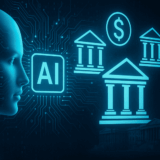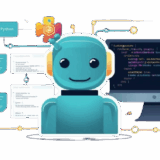Synthetic Humans: Redefining Digital Interaction
AI-driven digital entities are revolutionizing how we perceive and engage with technology, blurring the lines between human and machine interaction
The digital landscape is undergoing a profound transformation as artificial intelligence gives birth to a new category of entities that challenge our fundamental understanding of human-machine relationships. Synthetic humans—AI-driven digital beings designed to mimic human traits, behaviors, and interactions—are emerging as one of the most significant technological developments of our time, promising to reshape everything from customer service to entertainment, healthcare to education.
These sophisticated digital entities represent far more than simple chatbots or animated characters. They are AI-based simulations that look, sound, and act like humans, trained to convey messages and interact in ways that are virtually indistinguishable from human communication. As we stand at the threshold of this new era, the implications for society, business, and human connection itself are both profound and far-reaching.
The Evolution of Digital Beings
The journey toward synthetic humans has been gradual but accelerating. Building on the media equation theory, which suggests that people treat technology as social beings, synthetic humans have progressed from simple animated figures to advanced AI-driven avatars. This evolution reflects our innate tendency to anthropomorphize technology, but now the technology is sophisticated enough to meet us halfway.
Digital humans can take many forms, ranging from 2D and 3D characters to realistic humanoid figures, utilizing natural language processing (NLP), speech recognition, and advanced animation technologies. The sophistication of these systems has reached a point where they can engage in meaningful conversations, express emotions through facial expressions and gestures, and adapt their responses based on contextual understanding.
The technological foundation enabling this revolution includes breakthrough advances in machine learning, computer graphics, natural language processing, and voice synthesis. Companies like NVIDIA have released generative AI microservices specifically designed to accelerate the development of digital humans, making these technologies more accessible to developers and businesses across industries.
Applications Across Industries
The versatility of synthetic humans is driving adoption across numerous sectors, each finding unique ways to leverage these digital entities to enhance user experiences and operational efficiency.
Customer Service and Support In the enterprise sector, AI avatars are being integrated into customer support portals, digital kiosks, and internal knowledge hubs, providing 24/7 assistance with human-like interactions. These digital representatives can handle multiple customers simultaneously, never tire, and maintain consistent service quality while reducing operational costs.
Healthcare Applications The healthcare industry is discovering particularly compelling use cases for synthetic humans. Virtual health concierges are being deployed to guide patients through medical processes, provide health education, and offer emotional support. These digital entities can deliver sensitive medical information with appropriate empathy while ensuring consistency in communication.
Retail and E-commerce Personalized shopping assistants powered by synthetic humans are revolutionizing the retail experience, guiding consumers through product selections with the kind of personalized attention that was previously only available in high-end boutiques. These digital sales associates can remember customer preferences, suggest products based on past behavior, and provide detailed product information.
Entertainment and Media The entertainment industry has embraced synthetic humans for content creation and virtual performances. Virtual performers like MAVE, consisting of four AI-powered virtual humans, have achieved almost 30 million views, illustrating the immense potential of virtual entertainers. This trend is opening new possibilities for content creation, allowing for performances and interactions that would be impossible or prohibitively expensive with human actors.
Research and Development Synthetic humans are serving as AI tools for user research, designed to emulate intricate human behavior and provide brands with real-time feedback, cost-effective studies, and infinitely scalable consumer insights. This application is particularly valuable for testing products, services, and user interfaces without the logistical complexities of human subject research.
The Technology Behind the Magic
The creation of convincing synthetic humans requires the convergence of multiple advanced technologies. Natural language processing enables these entities to understand and respond to human communication naturally. Computer vision and facial recognition technologies allow them to interpret visual cues and respond appropriately to human expressions and gestures.
Voice synthesis and speech recognition technologies have advanced to the point where synthetic humans can engage in real-time conversations with natural-sounding voices that can convey emotion and personality. Modern systems bring advanced capabilities including meaningful conversations, natural gesturing, and context-adaptive interactions.
Animation and rendering technologies create the visual representation, with some systems achieving photorealistic appearances while others opt for stylized but appealing aesthetic approaches. The choice often depends on the intended application and the desired psychological response from users.
Machine learning algorithms tie everything together, enabling synthetic humans to learn from interactions, improve their responses over time, and develop personalities that feel authentic and consistent. These systems can be trained on specific knowledge domains, personality traits, and communication styles to match their intended roles.
Psychological and Social Implications
The emergence of synthetic humans raises fascinating questions about human psychology and social interaction. Research suggests that humans have an innate tendency to form emotional connections with entities that exhibit human-like characteristics, even when we know they are artificial. This phenomenon, sometimes called the “ELIZA effect,” becomes more pronounced as synthetic humans become more sophisticated.
These digital entities are creating new forms of interaction where people can have virtual replicas attending meetings, trying on clothes, and engaging with friends in digital spaces. This evolution challenges traditional notions of presence, identity, and authentic communication.
The psychological impact of regular interaction with synthetic humans remains an area of active research. Early studies suggest that people can develop genuine emotional attachments to well-designed digital entities, raising questions about the nature of relationships and emotional well-being in an increasingly digital world.
Ethical Considerations and Challenges
The rise of synthetic humans brings significant ethical considerations that society must address. Issues of consent, identity, and authenticity become complex when digital entities can convincingly represent human beings. The potential for misuse in creating unauthorized digital representations of real people poses serious privacy and legal challenges.
Transparency becomes crucial—users should understand when they are interacting with synthetic humans rather than real people. This disclosure requirement raises questions about how to maintain the effectiveness of these interactions while ensuring informed consent.
The impact on employment is another critical consideration. As synthetic humans become capable of performing roles traditionally filled by humans, industries must grapple with the implications for workers in customer service, entertainment, education, and other sectors.
Technical Challenges and Limitations
Despite remarkable advances, synthetic humans still face significant technical challenges. The “uncanny valley” phenomenon—where near-human entities evoke discomfort or unease—remains a hurdle for highly realistic synthetic humans. Many developers are addressing this by embracing stylized rather than photorealistic approaches.
Contextual understanding and emotional intelligence remain areas for improvement. While current systems can simulate emotional responses, true emotional understanding and empathy are still beyond current capabilities. The ability to handle unexpected situations or conversations that deviate from trained scenarios continues to be a limitation.
Computational requirements for real-time synthetic human interactions are substantial, requiring significant processing power for natural language processing, voice synthesis, and animation rendering. As applications require hundreds of thousands of tokens for single queries, with small language models making rapid sequential requests, the computational demands are shifting toward edge inference.
Future Projections and Market Evolution
The market for synthetic humans is experiencing explosive growth. Industry analysts project significant expansion as the technology matures and adoption accelerates across sectors. Predictions suggest that by 2030, 80% of humans will engage with smart robots on a daily basis, indicating the widespread integration of these technologies into everyday life.
The democratization of synthetic human creation tools is making the technology accessible to smaller businesses and individual creators. AI avatars are enabling users to create highly interactive digital personas for various applications, including marketing, personalized videos, and dynamic social media content.
Integration with emerging technologies like augmented reality, virtual reality, and the metaverse will create new possibilities for synthetic human interactions. These digital entities will likely become permanent residents of virtual worlds, serving as guides, companions, and service providers in digital environments.
Regulatory and Legal Landscape
Governments worldwide are beginning to address the regulatory challenges posed by synthetic humans and AI-generated content. Recent legislation includes measures to regulate synthetic media, with some jurisdictions implementing requirements for disclosure and consent. These regulatory frameworks are evolving rapidly as policymakers attempt to balance innovation with protection against misuse.
International cooperation will be essential to establish consistent standards for synthetic human development and deployment. Issues such as cross-border data flow, intellectual property rights, and liability for AI actions require coordinated regulatory approaches.
The Path Forward
As synthetic humans become increasingly sophisticated and ubiquitous, society must thoughtfully navigate the opportunities and challenges they present. The technology offers tremendous potential to enhance human experiences, improve accessibility, and create new forms of entertainment and interaction.
Success in this new landscape will depend on developing synthetic humans that enhance rather than replace human connection, that are transparent about their artificial nature while still being engaging and useful, and that are designed with ethical considerations at their core.
Digital entities represent a wide class of technology designed to stand in for humans and automate tasks in digital spaces, but their ultimate value will be measured by how well they serve human needs and enhance human capabilities rather than simply replacing human workers.
Conclusion
Synthetic humans represent a fundamental shift in how we interact with technology and how technology can interact with us. As these digital entities become more sophisticated, accessible, and integrated into our daily lives, they will continue to challenge our understanding of consciousness, relationship, and what it means to be human in a digital age.
The successful integration of synthetic humans into society will require careful consideration of ethical implications, thoughtful regulation, and a commitment to using this powerful technology to enhance human flourishing. As we stand at the beginning of this transformation, the choices we make today about the development and deployment of synthetic humans will shape the digital landscape for generations to come.
The future of human-machine interaction is not just about making machines more human-like—it’s about creating new forms of relationship and communication that leverage the best of both human and artificial intelligence. In this emerging landscape, synthetic humans serve as bridges between the digital and physical worlds, opening new possibilities for connection, creativity, and collaboration.



















